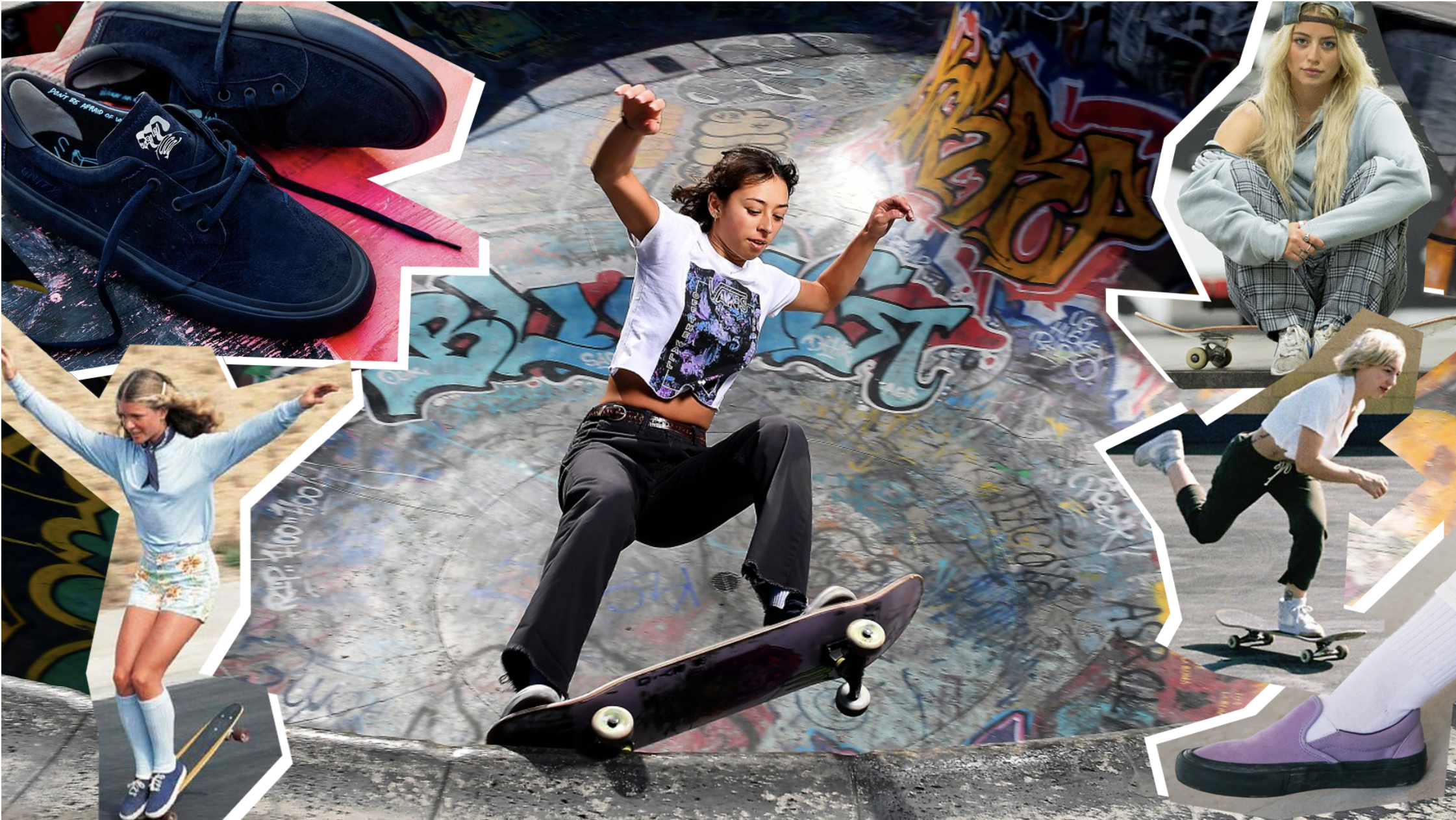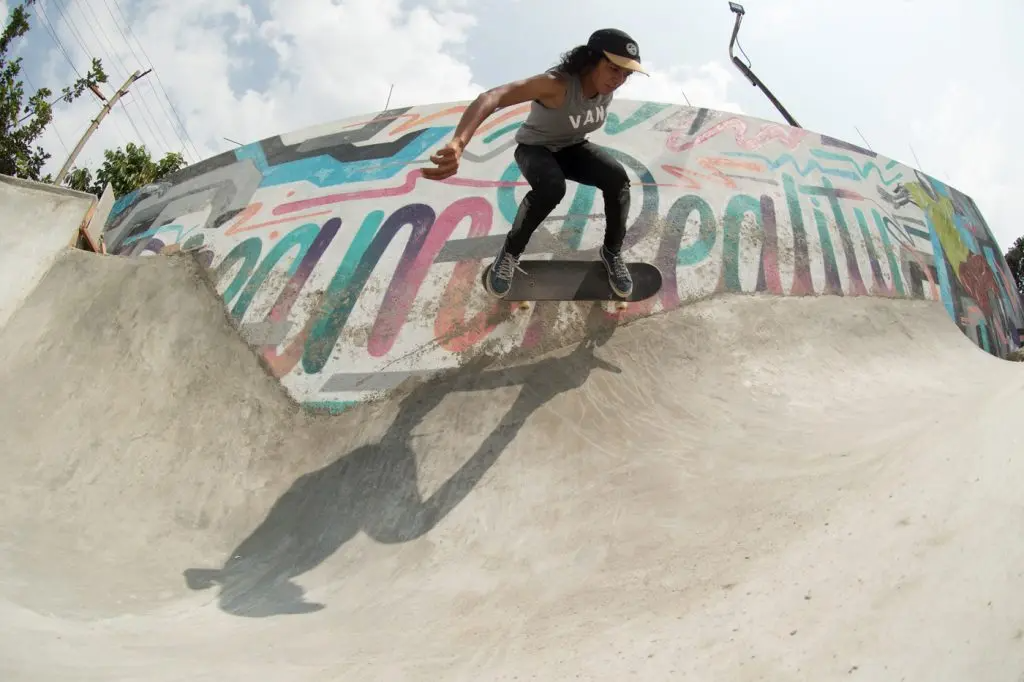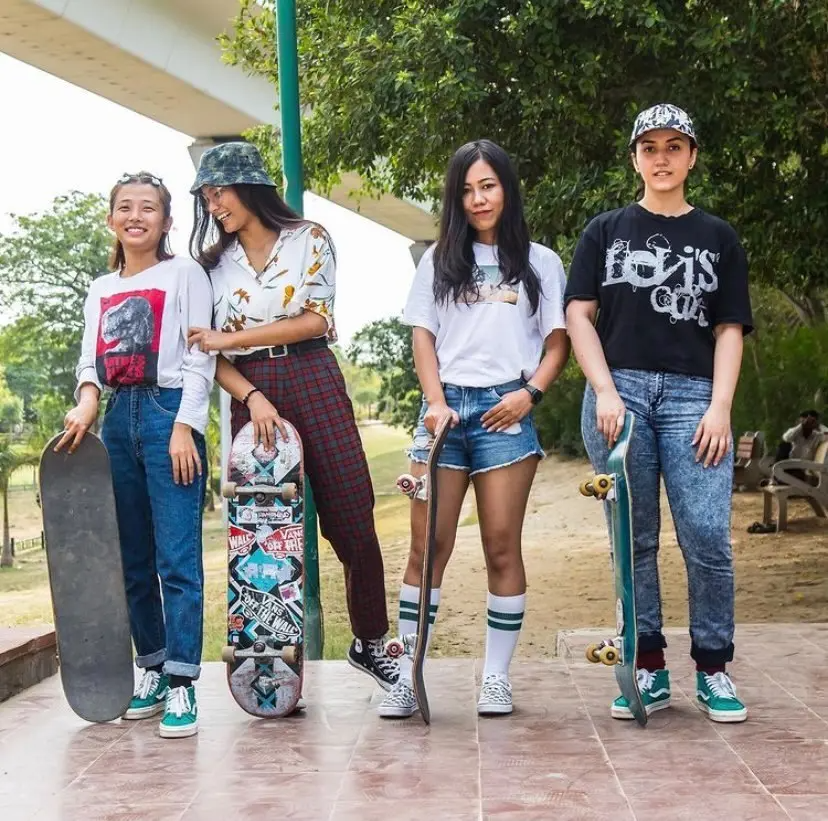Article by Kylie Becker
Since skateboarding started to hit more mainstream media, the fashion and attitude of skateboarders has been sought after. Much of these attempts to emulate skater style come off corny usually, such as Vogue's Skate week. But like the community efforts in skateboarding, the style of skateboarders has grown by definition and so has the product market.
STYLE AT A GLANCE
Stereotypical skater style has grown since the origins of street skating in the 1970’s. Best depicted in Lords of Dogtown the California beach meets bowl aesthetic set the tone for what skateboarding looked like in media and in the minds of many.
California’s drought in the 1970’s left many pools empty which allowed local skaters to create DIY spots ideal for skateboarding. DIY culture blended into skateboarding through other cultural events happening in parallel such as surfing and punk rock.
The 90’s gave way to oversized everything – silhouettes, branding, logos and shoes. Some of those styles we've seen mirrored in parodies such as Clueless and basically any stoner representation in media. 90's fashion has dominated every trend since 2010. We've seen so many variations on those trends evolve, but brand's that have come up in the 90's like Supreme and Stussy have absolutely dominated the modern "skater clothing" market. 90's silhouettes are often replicated in modern ways, like ASAP Rocky for Under Armour.
FOOTWEAR REIGNS SUPREME
As fashion has evolved, so has the cultural conversation. Skateboarding has come a long way from the 1970’s and the cis male presence that once reigned over the sport. Inclusivity has been the topic of conversation since the women's and queer skate scene started exponentially growing in 2015.
Footwear has always been an integral part of the skate industry. As skateboarding has become more and more popular, mainstream brands have added teams to their roster. Adidas, Nike, Converse and New Balance all have gotten into the skate industry’s footwear game.
Van's has taken a large stake in using their platform to uplift women and queer skateboarders. From the media landscape, they've covered beautiful stories through their Love Letter's series. From the fashion aspect, Vans has released dozens of collections with non-traditional skateboarders such as: Lizzie Armanto, Beatrice Domond, Cher Strauberry, Una Farrar, Fabiana Delfino, and Brighton Zeuner. Van's roster remains to mirror the trends of the industry. Each riders career dips into the varying fashion landscape of skateboarding while broadening the definition of what it means to look like a skateboarder.
In addition to Vans, major brands in the skate space such as Nike SB continue to provide leadership in the cultural conversation of inclusivity during recent times. Their film such as Gizmo or their partnership with Skate Like a Girl are just two ways they've integrated themselves into the non-traditional skate market.
Adidas made leaps in reaching skaters of all gender identities and expressions when releasing their fall 2020 line of gender neutral clothing and shoes in partnership with Unity, a queer-based skateboarding brand that focuses on creative outlets representing the queer community within the skate industry.
SHOPPING SMALL
While larger businesses take strides to update their products, smaller businesses have been gaining more popularity for their authentic approach to inclusivity.
Doyenne Skateboards, a women-run skateboarding brand located in Glasgow, Scotland is also pursuing gender nuetrality within the skateboarding and fashion landscape. Their clothing and initiatives promote equality and unity as they design clothes with the intention to suit all genders.
Marissa Martinez has also taken matters into their own hands, or legs. Marissa is the founder of MamaSkate, clothing brand that makes unisex pants and shorts. On their website, Marissa describes her unisex pants and shorts design as an: eco-friendly limited run unisex pants and shorts with pockets so deep you'll ditch your purse. The skater-designed pants and shorts come in a variety of colors and are made to actually be the perfect fit and fabric for skateboarding. Marissa’s personal experience with fashion and skateboarding has opened new doors to the discussion and design of skater focused clothing within the skate world.
INDIVIDUAL INFLUENCES
Social media has shifted the focus from brands and branded content, to skaters themselves– changing the way we view skateboarding as well as self expression. There have been some pivotal figures in the skating world that have opened the doors to a whole new era of how we view skate fashion.
Victoria Taylor, better known on Instagram as Skatemoss shows off her fashion sense on a highlight on her IG page with many outfits ranging in various styles from very “feminine” to “tomboy.” Those outfits include extremely baggy jeans with boxers showing, oversized t-shirts, Nike high-top dunks, and a beanie or SnapBack to tighter, more “traditional” female clothing, such as crop tops, dresses, and boots.
With a four year degree from the Fashion Institute of Design and Merchandising and a signed model with Next Model Agency, Victoria’s creativity in the fashion world and talents in the skating world have merged into a unique combination of self-expression. Victoria’s authenticity on and off of her skateboard has also landed her a collection with Grizzly which included crop hoodies, joggers, bodysuits, sports bras, crop tees, and griptape.
Victoria represents a lot of individuals in the skate culture. She, like Marissa Martinez, represents many non-traditional skaters, including young girls, young adult women, and the LGBTQ+ community who are not visually represented as frequently in the skate industry.
Another figurehead in queer self-expression in the skate industry is Kane Caples. Caples, an amateur skater popular on TikTok and Instagram, is the perfect example of skateboarding and fashion simultaneously having no limitations when it comes to gender and gender nonconformity.
THE FUTURE OF FASHION
Each day gets brighter when major skate brands promote skaters and fashion trends that do not fit “the norm.” Mainstream brands like Vans, Nike, Adidas, New Balance, Thrasher, and Supreme have the stage to support underrepresented skaters and to promote a diversified outlook on skateboarding.
Pivotal brands and individuals as we've mentioned, have the ability to use their platforms to promote the changing landscape. These valuable communities (the queer and women's skate communities) have gradually been breaking down barriers to be more included in all facets of the skating world.
Overall, the views on and passion for skateboarding by these supportive brands and innovative individuals has left a long-lasting message for the skate community; it doesn’t matter the style of clothes that are worn, overall appearances, how someone identifies regarding gender, race, or sexual orientation - skateboarding is universal and it is for everyone.









